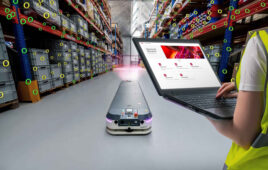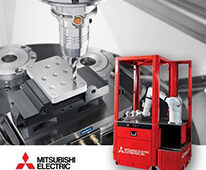By Benjamin Orchard, Application Engineer, Opto 22
Machine designers, systems integrators, and consultants focused on reducing their energy consumption need systems that monitor and gather power consumption data from facilities, systems, and equipment; and tools that help them analyze the data so that they can create, innovate, change business practices, and ultimately slash their energy bills. To better assist customers in this endeavor, be sure to consider the following tips during your design:
Develop a “business-sized” solution. While the market for monitoring energy consumption in private residences is growing, the needs of small business and large industrial customers are different. For example, small and large businesses:
• use more energy simply because of the greater square footage of their structures.
• operate heavy energy consuming equipment, with their subsequent higher supply voltages.
• Use three-phase electric power versus residential single- or dual-phase.
Large customers need to know the power requirements and draw of each individual asset in their facility, including each piece of manufacturing machinery, every lighting and refrigeration system, each heavy duty pump or motor, and all HVAC systems. Ideally, each item should be tracked and accounted for separately. But this need should not lead to a separate energy management system for each asset. The best solution is a single system with enough precision to measure changes in power draw from each identifiable source.

An energy monitoring system, like the OptoEMU, helps users track subtle changes in energy usage as machines rev up, idle and cycle.
Power-monitoring systems rely on hardware connections—typically I/O modules, current or voltage sensors, signal processors and instrumentation—to gather data. This hardware should deliver the highest levels of accuracy and resolution in the readings they acquire. When power monitoring, for example, as analog voltage signals are converted to digital readings, the analog to digital conversion must allow for granular measurements across the full range of the power spectrum. In an industrial facility, this spectrum can be 1000 A or greater. Nevertheless, customers need a monitoring system with enough resolution to update digital reading even when voltage or current measurements barely fluctuate.
Opto 22’s OptoEMU system includes power monitoring modules with 15-bit resolution, which translates into 25,000 possible measurements across the given power range. So for a 1000 A facility, this means voltage changes as small as 0.04 A can be detected. This measurement capability not only lets users discern major changes in power draw as machinery turns on and off, it also detects subtle changes as machines rev up, idle, and cycle.
Use standard communication technologies. An energy management system that uses standard communication technologies—including Ethernet and protocols like IP, SMTP, and HTTP—delivers an easy method to share energy-related data. Energy consumption data should be made readily available. A monitoring system using the Ethernet and IP standards has the interoperability to effectively broker communication between plant equipment, systems, and corporate networks and databases across operator interface terminals and web-enabled PCs and mobile devices.
Such access helps offsite personal who may need 24/7 access to reconcile their facility’s power requirements with production schedules and the pricing structure set forth by their power provider. An IP-enabled system lets users share and view data using web-based software tools that interface to energy monitoring hardware, and presents the power consumption data through simple graphical user interfaces. The OptoEMU system, for instance, works with Google PowerMeter, a free energy monitoring tool that connects to smart meters and energy monitoring devices and lets users view their energy consumption from anywhere online.
Easy data sharing is crucial for alarming functions. Systems should be configured to alarm through email (SMTP) or text (SMS) messages sent to key personnel whenever predefined thresholds are eclipsed.
Ensure design gathers data in real time. Information has always been an important business driver. For example, knowing that an autoclave or other heating system draws the most power as its warming up may prove that it’s cheaper to keep the machine running (even when not in use) rather than turn it on and off repeatedly. Scenarios such as this happen frequently enough that even the DOE has identified real-time information and its ability to deliver a “faster and more accurate response” as one of the five fundamental technologies that will drive key federal energy management initiatives.
Real-time visibility of such information is key to take advantage of cost saving opportunities. Power companies offer heavy energy consumers incentives to decrease their consumption during hours of peak demand. Conversely, these same utilities charge premiums if customers exceed certain thresholds. So with power draws naturally fluctuating (often dramatically over the course of even just a few minutes) a real-time energy monitoring and data acquisition system can manage equipment and load shed in the most cost-effective manner.
Provide a “plug and play” solution. An energy monitoring system should be easy to install straight out of the box, and offer a method to translate and present the acquired data in a straightforward, non-esoteric way. Use of raw figures is fine, but customers want them converted into something more relatable—dollars and cents. A little software development that will give customers the ability to see and understand that 100 kWh translates into “x” amount of dollars provides a convenience and also a more persuasive measurement tool that can serve to validate the customer’s investment in the energy monitoring system.
Opto 22
www.opto22.com
::Design World::
Filed Under: Factory automation, CONNECTIVITY • fieldbuses • networks, Wireless • 5G and more, TEST & MEASUREMENT, PLCs + PACs





Tell Us What You Think!